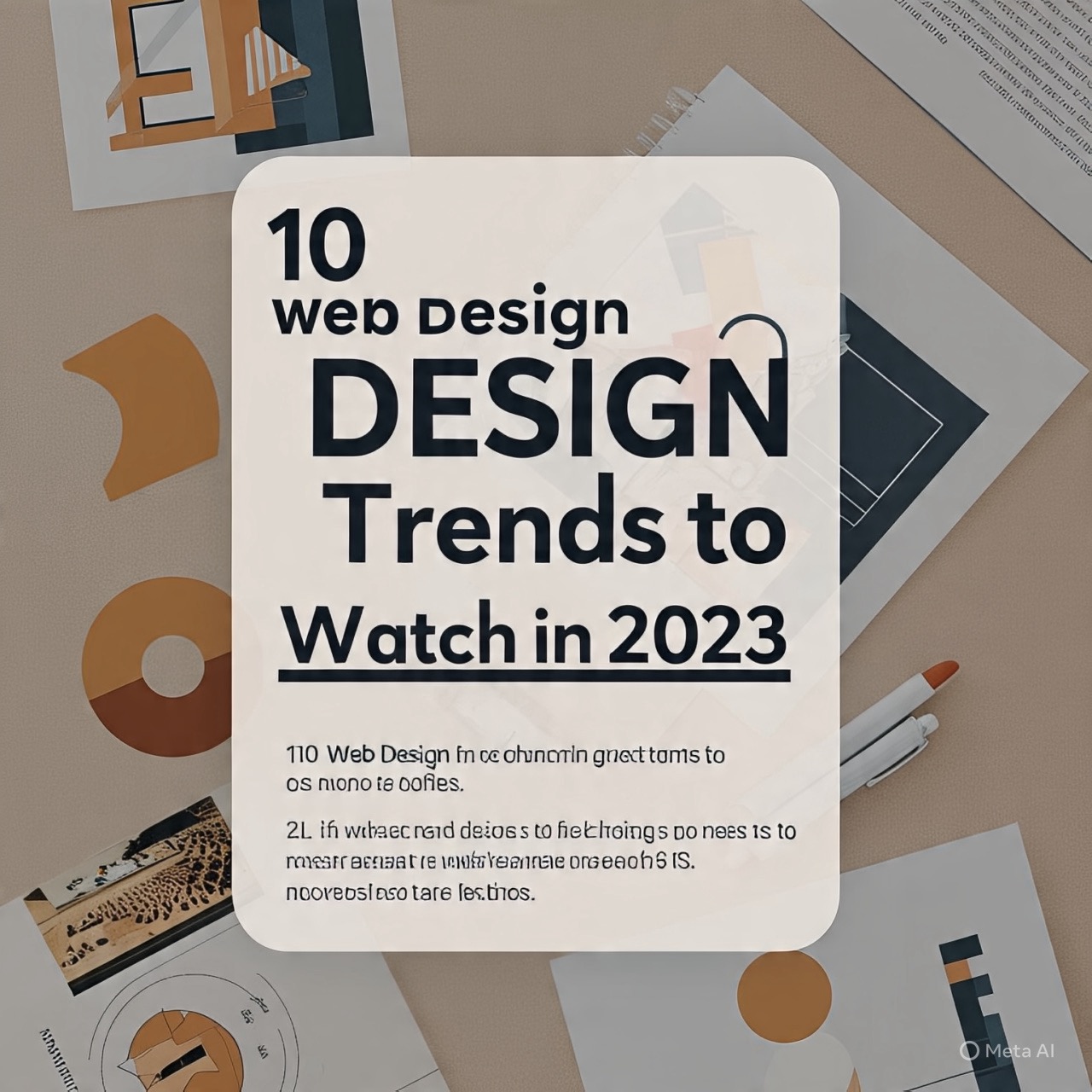10 Web Design Trends to Watch in 2023

Web design is constantly evolving, with new trends emerging each year that shape the digital landscape. As we move through 2023, several exciting trends are gaining momentum and transforming how websites look and function. In this article, we'll explore the top 10 web design trends that are making waves this year and how you can incorporate them into your own projects.
1. Immersive 3D Elements
Three-dimensional elements are becoming increasingly popular in web design, adding depth and interactivity to otherwise flat interfaces. With advancements in WebGL and JavaScript libraries like Three.js, designers can now create stunning 3D experiences that engage users and showcase products in innovative ways. From product visualizations to interactive backgrounds, 3D elements are helping brands stand out in a crowded digital space.
2. Dark Mode Interfaces
Dark mode continues to gain popularity, offering not only aesthetic appeal but also practical benefits like reduced eye strain and improved battery life on OLED screens. Many websites now offer toggle options between light and dark modes, allowing users to choose their preferred viewing experience. When implementing dark mode, it's important to maintain proper contrast ratios and ensure readability across all elements.
3. Micro-Interactions
Micro-interactions are subtle animations or feedback mechanisms that respond to user actions, enhancing the overall user experience. These small but meaningful interactions—like button hover effects, form field animations, or loading indicators—make websites feel more dynamic and responsive. When used thoughtfully, micro-interactions can guide users, provide feedback, and add personality to your website.
4. Glassmorphism
Glassmorphism creates a frosted glass effect that gives elements a translucent appearance, adding depth and layering to interfaces. This design trend features blur effects, subtle transparency, and soft backgrounds that mimic the look of frosted glass. When combined with colorful gradients or backgrounds, glassmorphism creates a modern, ethereal aesthetic that's both functional and visually appealing.
5. Voice User Interfaces (VUI)
As voice assistants become more prevalent in our daily lives, voice user interfaces are making their way into web design. Websites are increasingly incorporating voice search and navigation options, making content more accessible and convenient for users. This trend not only improves accessibility for users with disabilities but also caters to the growing preference for hands-free interaction.
6. Horizontal Scrolling
While vertical scrolling remains the standard, horizontal scrolling is gaining popularity for specific content sections like portfolios, product showcases, and image galleries. When implemented correctly with clear navigation cues, horizontal scrolling can create unique and engaging user experiences that break from conventional layouts.
7. Minimalist Navigation
Simplified navigation continues to trend, with many websites opting for streamlined menus, hamburger icons, and hidden navigation to create cleaner interfaces. This approach reduces visual clutter and focuses user attention on the content that matters most. When implementing minimalist navigation, it's crucial to ensure that users can still easily find what they're looking for without frustration.
8. Custom Illustrations and Animations
Unique illustrations and animations are helping brands differentiate themselves and create memorable user experiences. Custom graphics add personality and storytelling elements that stock photography often lacks. From hand-drawn illustrations to character animations, these custom elements create emotional connections with users and reinforce brand identity.
9. Asymmetrical Layouts
Breaking away from rigid grid systems, asymmetrical layouts create dynamic, visually interesting designs that guide the user's eye through content in unique ways. These layouts use balance and visual weight rather than perfect symmetry to create harmony. When executed well, asymmetrical designs can make websites more engaging and memorable.
10. Accessibility-First Design
Perhaps the most important trend is the growing emphasis on accessibility. Designers are increasingly prioritizing inclusive design practices that ensure websites are usable by people of all abilities. This includes proper color contrast, keyboard navigation, alternative text for images, and semantic HTML. Accessibility is not just a trend but a fundamental aspect of responsible web design that benefits all users.
As you consider incorporating these trends into your web projects, remember that the most effective designs balance innovation with usability. Not every trend will be appropriate for every website, so choose the ones that align with your brand identity and user needs. By thoughtfully implementing these trends, you can create websites that are both cutting-edge and user-friendly.